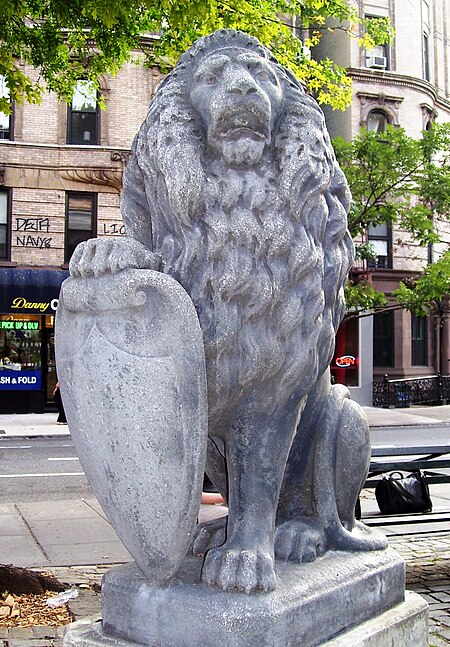Abe Lebewohl Park
East Village, ManhattanParks in ManhattanUse mdy dates from February 2024

Abe Lebewohl Park is a public park in the East Village neighborhood of Manhattan in New York City, in front of the St. Mark’s Church in-the-Bowery where East 12th Street, Second Avenue, and Stuyvesant Street meet. The park is named after Abe Lebewohl, a local who owned the Second Avenue Deli, which was formerly located across the street from the park. It contains a small seating area as well as a Ukrainian-American World War II memorial.
Excerpt from the Wikipedia article Abe Lebewohl Park (License: CC BY-SA 3.0, Authors, Images).Abe Lebewohl Park
Stuyvesant Street, New York Manhattan
Geographical coordinates (GPS) Address Nearby Places Show on map
Geographical coordinates (GPS)
| Latitude | Longitude |
|---|---|
| N 40.73 ° | E -73.987 ° |
Address
Stuyvesant Street
Stuyvesant Street
10003 New York, Manhattan
New York, United States
Open on Google Maps





